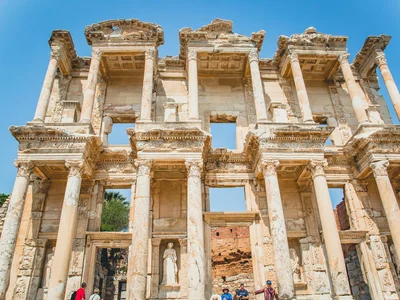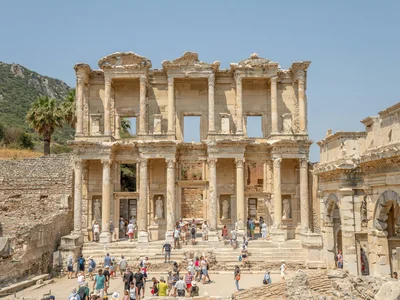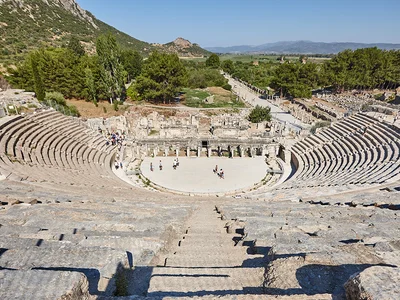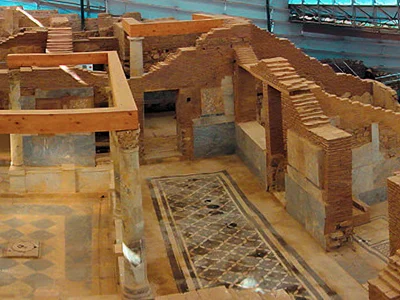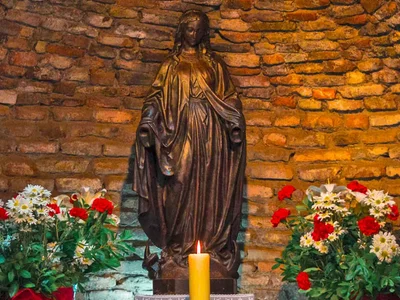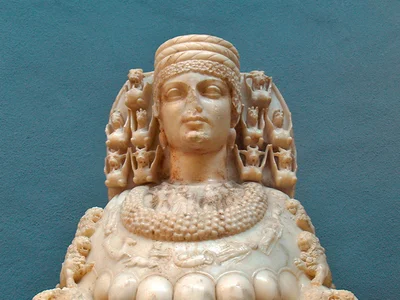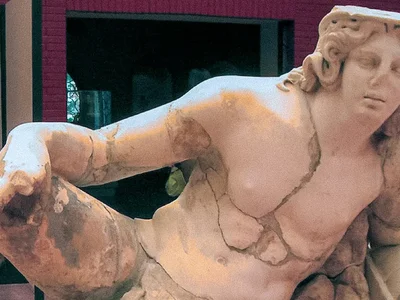Temple of Artemis: Wonder of the Ancient World
Nestled in the ancient city of Ephesus, in what is now modern-day Turkey, stands the remnants of one of the most remarkable structures of the ancient world: the Temple of Artemis. Also known as the Artemision, this grand edifice was dedicated to Artemis, the Greek goddess of hunting, wilderness, and fertility, and was revered as one of the Seven Wonders of the Ancient World.
The earliest known sanctuary on the site dates to around the 10th century BCE. However, it was during the Archaic period that the temple began to take shape as a monumental structure, reflecting the growing importance of Artemis in the region.
The original temple was subsequently destroyed by a flood. In the 6th century BCE, the Lydian king Croesus funded the construction of a new, larger temple, designed by the architect Chersiphron and his son Metagenes. This temple, completed around 550 BCE, was a marvel of ancient architecture, boasting a grand colonnade, intricate carvings, and richly adorned interiors.
Over the centuries, the temple was rebuilt multiple times, each iteration more magnificent than the last. The most famous version, often referred to as the "Great Artemision," was commissioned by Croesus and featured 127 towering columns, each standing over 18 meters tall, adorned with elaborate sculptures and reliefs.
The temple's significance extended far beyond its architectural splendor. As the focal point of Artemis worship, it served as a center of religious and cultural life in Ephesus. Pilgrims from across the ancient world flocked to the temple, seeking blessings for fertility, protection, and prosperity. Its vast wealth, accumulated through offerings and donations, made it one of the richest religious institutions of its time.
Despite its grandeur, the Temple of Artemis faced destruction multiple times. It was razed by arson in 356 BCE, allegedly by Herostratus, who sought to immortalize his name through this act. The Ephesians rebuilt quickly, completing a new temple around 323 BCE, even larger and more magnificent, decorated by artists like Praxiteles and Scopas.
This second temple stood for several centuries until it was destroyed by invading Goths in 262 CE.
Today, little remains beyond scattered ruins and columns. Yet the Temple of Artemis endures in history as a testament to the ingenuity, devotion, and creativity of the ancient civilizations of Ephesus. Its legacy continues to inspire awe, reminding us of human endeavor and the enduring power of the gods.

